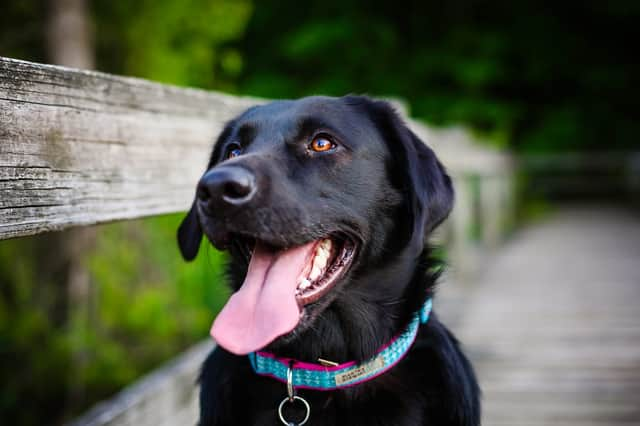Here’s how to keep your dog safe from deadly blue-green algae during the summer months


Dog owners are being warned to take extra care when walking their pets due to the presence of toxic algae at this time of year.
If you live near water, you might have noticed this strange looking substance. Here’s how to spot it, why it’s dangerous for your dog, and how to keep your pet safe.
What is blue-green algae?
Advertisement
Hide AdAdvertisement
Hide AdDespite its name, blue-green algae isn’t actually algae but a type of bacteria - it’s called algae due to the fact that it looks like algae.
Clumps of this bacteria, called “blooms”, can look like green flakes, greenish bundles or brown dots on top of a body of water, like a pond, lake or stream.
The Blue Cross explains that blooms often build up around the edges of ponds and lakes, and can look like foam.
“It is most common in non-flowing fresh water such as lakes and ponds during hot weather when there is less rainfall,” the Blue Cross says.
Why is blue-green algae dangerous?
Advertisement
Hide AdAdvertisement
Hide AdBlue-green algae can produce harmful toxins which affect your dogs liver, preventing it from functioning properly.
It should be noted that not all types of blue-green algae are dangerous, but you cannot determine if it’s dangerous or not by looking at it.
For dogs, exposure to this bacteria is often fatal, and where it is not fatal, it can cause long-term health problems for your dog.
The Blue Cross says that “some types of blue-green algae can kill a dog just 15 minutes to an hour after drinking contaminated water”.
What are the symptoms of blue-green algae poisoning?
Advertisement
Hide AdAdvertisement
Hide AdThe main symptoms the Blue Cross warns owners to look out for are:
- Vomiting/being sick
- Diarrhoea
- Seizures/having fits
- Weakness/collapse/unconsciousness
- Disorientation/confusion
- Drooling
- Breathing difficulties
If your dog is showing any of these symptoms after drinking from, or even swimming or paddling in water, you should contact your vet immediately and tell them you are concerned about possible blue-green algae poisoning.
Unfortunately, there is no cure for poisoning from blue-green algae, but if it’s caught early enough, your vet will likely try and induce vomiting for your dog in an attempt to flush out the toxins from the body.
Is blue-green algae dangerous to humans?
It’s not just your dog that can be affected by the bacteria - it also proves harmful to humans.
Advertisement
Hide AdAdvertisement
Hide AdThe Blue Cross states: “Blue-green algae can cause skin rashes, sickness, stomach pains, fever and headaches in humans.”
There have also been reports of more serious illnesses caused by the bacteria, like liver and brain damage.
Children are at greater risk than adults, but regardless, you should keep away from anything you think could be blue-green algae.
What should I do if I see blue-green algae?
If you come across what you think is blue-green algae, keep yourself and your pet away from it.
Advertisement
Hide AdAdvertisement
Hide AdIn areas that experience blue-green algae, you will sometimes see warning signs.
If there are no signs, you can report the blue-green algae to the Environment Agency, who will investigate.
To report it, you’ll need to phone the incident hotline on 0800 80 70 60 - this number is a 24 hour service, so you can call at any time.